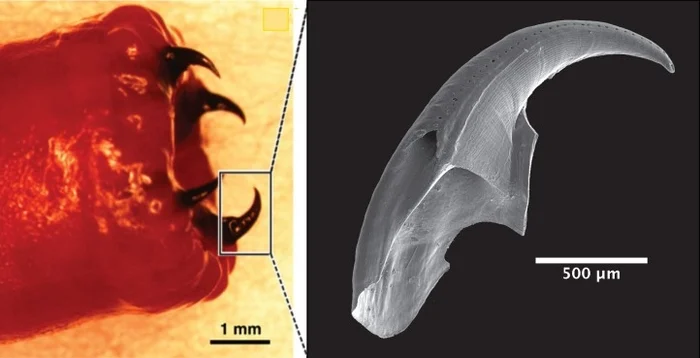A couple of weeks ago I talked about nematodes that were revived after 42,000 years in the permafrost. So when I saw this story, I couldn’t resist it.
Bloodworms live in the seabed off the coast of North America. They are carnivores that burrow deep into the mud and emerge to grasp their prey (and anything else passing) in their venomous jaws that are partially composed of copper.
They have a bad attitude and will attack anything within range.
But the fangs in their jaws are quite peculiar. They are comprised of protein, melanin and copper, can last up to five years (the entire lifespan of the bloodworm) and are very, very hard.
Up ’till now it’s not been clear how the worm is able to make these fangs, but a new paper describes how it’s done.
The fangs are made of just copper, melanin and a protein called multi-tasking protein (MTP). MTP performs numerous chemical roles, including binding the copper (harvested from marine sediment), catalysing melanin formation, and acting as an organiser and fabricator: it assembles the blend of protein, copper and melanin that make up the jaws in the bloodworm’s proboscis.
MTP as a protein is relatively simple but it performs so many functions, and so simply, that it is suggesting new material manufacturing processes.
Source article: A multi-tasking polypeptide from bloodworm jaws: Catalyst, template, and copolymer in film formation: Matter and We Finally Know How The Nightmarish Bloodworm Grows Fangs Made of Metal.
I talked about this with Danny Hoyland on West Bremer Radio on 30 April 2022. Listen each week: Saturday 7.40 am, West Bremer Radio.

